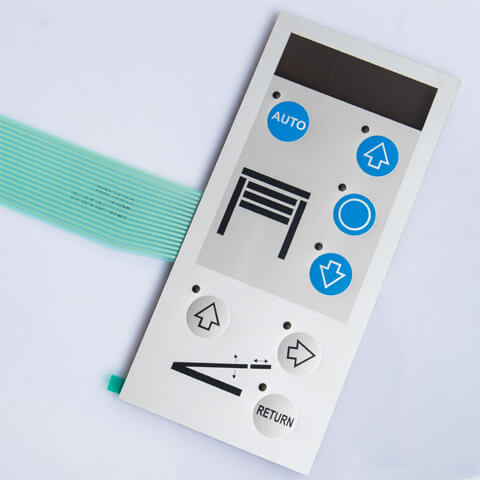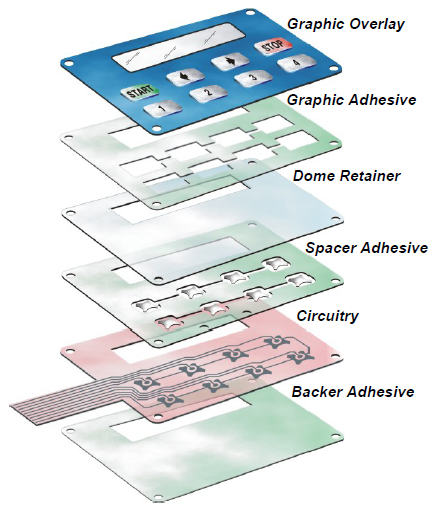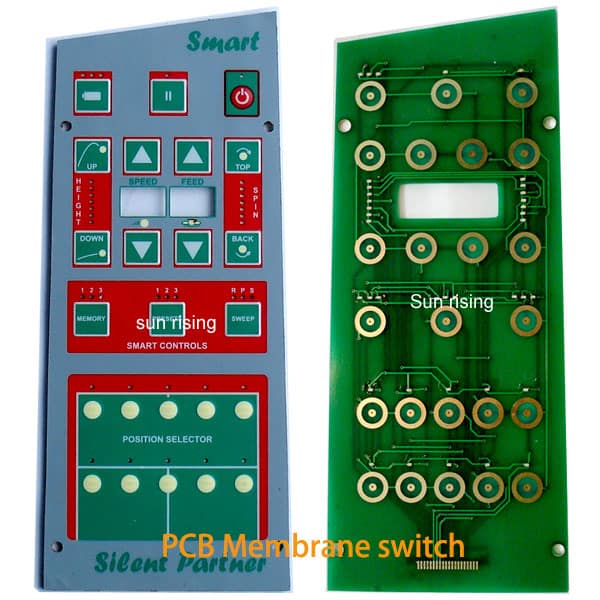Checking Out the Benefits of Membrane Layer Switches Over for Modern Electronic Devices
The exploration of membrane buttons in modern electronic tools offers a remarkable perspective on their myriad benefits, especially in terms of style versatility, resilience, and cost-effectiveness. These user interfaces not only stand up to extreme ecological problems yet also offer a high degree of modification, which is increasingly crucial in today's affordable market. As industries remain to progress, the duty of membrane layer buttons in improving user experience and operational efficiency warrants closer examination. Understanding just how these parts can shape the future of electronic applications might reveal understandings that can influence design and production techniques significantly.
Advantages of Membrane Layer Buttons
Membrane buttons are significantly preferred in contemporary electronics due to their various advantages. One of the key advantages is their portable layout, which permits space-efficient assimilation right into numerous gadgets. This slim account not just conserves area but likewise contributes to the total visual charm of electronic products.
Another advantage is their longevity. Membrane layer switches are normally immune to moisture, dust, and pollutants, making them suitable for usage in settings where exposure to rough problems is an issue. This resistance extends the lifespan of the switches, minimizing the demand for frequent replacements and maintenance.
In addition, membrane changes offer outstanding responsive responses, improving user experience. The responsive feedback is often developed to provide an enjoyable experience upon activation, which can improve user contentment and efficiency.
Additionally, the production procedure of membrane switches is economical, permitting lower production prices compared to traditional mechanical buttons. This cost makes them suitable for a wide variety of applications, from consumer electronic devices to commercial equipment.
Layout Versatility and Personalization
The layout adaptability and modification options used by membrane changes additionally enhance their charm in modern-day electronics. These buttons can be tailored to meet details visual and functional requirements, enabling suppliers to develop gadgets that align carefully with brand name identification and customer choices. With numerous alternatives in terms of colors, forms, and sizes, membrane buttons can seamlessly incorporate right into varied product styles, whether for customer electronics, commercial applications, or clinical gadgets.
Additionally, the capacity to include graphics and symbols directly onto the button surface boosts functionality while minimizing the need for additional labeling. This integration not just streamlines manufacturing processes however also adds to a sleeker total look. The style can be more tailored via functions such as backlighting, responsive feedback, and multi-layer constructions, offering enhanced customer communication.

Resilience and Environmental Resistance

Additionally, membrane buttons can be crafted to be chemically immune, making them suitable for applications in commercial settings where exposure to solvents and cleaning up representatives is common. The encapsulation of electronic components within the membrane layer framework provides extra protection versus environmental stresses, ensuring trustworthy performance even in tough conditions.
Along with physical longevity, membrane changes exhibit excellent resistance to UV light, preventing deterioration and discoloration in time (membrane switch). This characteristic is specifically helpful for exterior applications, where extended exposure to sunlight can compromise other switch types
Ultimately, the durability and ecological resistance of membrane switches make them an ideal option for a wide range of contemporary electronic tools, from medical devices to consumer electronic devices, ensuring constant capability and user contentment throughout numerous applications.
Cost-Effectiveness in Manufacturing
Cost-effectiveness in manufacturing is a significant advantage of membrane switches, making them a preferred selection for suppliers in various sectors. The manufacturing process of membrane switches commonly includes less products contrasted to conventional buttons, which minimizes resources prices. This streamlined manufacturing procedure not just conserves money yet likewise minimizes waste, straightening with contemporary sustainability site web objectives.
Moreover, membrane layer switches can be generated utilizing automated techniques, enabling high-volume output with decreased labor prices. The combination of advanced printing technologies even more improves efficiency, enabling manufacturers to achieve elaborate styles and view website capabilities without incurring significant extra expenses. This scalability ensures that manufacturing can adjust to transforming market needs without jeopardizing high quality or increasing costs.

In addition, the lightweight nature of membrane changes adds to set you back savings in shipping and handling, in addition to in the general design of digital devices. By eliminating bulky components, suppliers can optimize the general item design, therefore enhancing market competition. In general, the cost-effectiveness of membrane layer switches not just advantages makers financially however additionally assists in development and rapid item advancement in the vibrant landscape of modern-day electronic devices.
Applications in Numerous Industries
Adaptability attracts attention as a hallmark of membrane layer buttons, enabling them to find applications throughout a variety of industries. In the healthcare field, these buttons are essential to clinical tools, offering easy to use user interfaces for devices like mixture pumps and analysis makers. Their resistance to dampness and very easy cleansing make them optimal for settings calling for stringent hygiene requirements.
In the automobile sector, membrane layer switches contribute to the capability of dashboards and control board, supplying a sleek, contemporary appearance while making sure longevity versus rough conditions. Their lightweight design additionally sustains total lorry effectiveness.

Furthermore, commercial equipment check it out uses membrane buttons for functional controls. Their durable nature and customizable functions satisfy the certain needs of varied applications.
Conclusion
To conclude, membrane switches over deal considerable advantages for contemporary electronics, consisting of design versatility, sturdiness, and cost-effectiveness. membrane switch. Their adjustable attributes and resistance to environmental aspects make them appropriate for a wide variety of applications across various sectors. As technological demands continue to evolve, the convenience and performance of membrane switches placement them as an important component in boosting customer experience and driving advancement within the affordable landscape of electronic gadgets